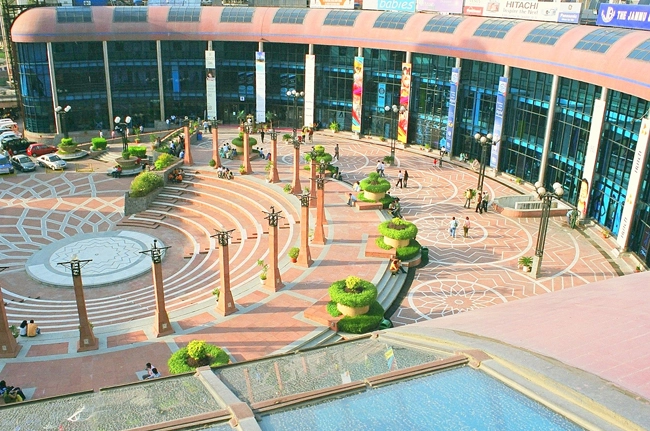A Symbol of a Changing City
When Ansal Plaza opened its doors in November 1999, it wasn’t just another shopping centre — it was a cultural milestone. Situated in the upmarket neighbourhood of Andrews Ganj, the mall quickly became synonymous with a newly liberalised India. The semi-circular structure, with its sunlit atrium and open amphitheatre, represented something novel and exciting: a space where consumption, entertainment, and leisure converged in a way Delhi had never seen before.
For many Delhiites, especially the youth and middle class of the late ’90s and early 2000s, visiting Ansal Plaza was an event. It was the first taste of what Western-style malls looked and felt like. With brands like Nike, Adidas, Shoppers Stop, and McDonald’s, the mall symbolised aspiration. Teenagers hung out on the steps of the amphitheatre, couples stole moments on its breezy terraces, and families made weekend pilgrimages to shop, dine, and be seen.
The Era of the Destination Mall
Ansal Plaza wasn’t just about shopping. It was about the experience. Unlike the utilitarian markets of old Delhi or the local shopping complexes scattered across neighbourhoods, the mall created an environment that felt curated and cosmopolitan. There were fashion shows, music gigs, art events, and product launches — all of which gave the impression that Ansal Plaza was more than just a building; it was a hub of cultural activity.
It also came at a time when India’s economy was opening up and the global market was becoming increasingly visible in Indian cities. Malls were a new kind of public space — safe, clean, air-conditioned — offering relief from the chaos of traditional markets. Ansal Plaza rode this wave successfully for a few years, becoming a must-visit place for college students, young professionals, and families alike.
The Slide into Obscurity
But as Delhi expanded and new malls began popping up across the NCR — in Saket, Vasant Kunj, Noida, and Gurgaon — the uniqueness of Ansal Plaza began to fade. The advent of sprawling mall complexes like Select Citywalk, DLF Promenade, and Ambience Mall offered bigger retail spaces, multiplexes, food courts, and more luxury brands. These new venues were not only more modern but also better connected to Delhi’s growing metro network and burgeoning suburbs.
By the late 2000s, Ansal Plaza’s charm was visibly wearing off. Stores began to shut down, footfall declined, and the vibrant cultural calendar that had once kept the mall alive slowed to a crawl. Even renovation efforts in the 2010s — which saw a push toward boutique stores, niche restaurants, and co-working spaces — failed to recreate the magic.
A Shell of Its Former Self
Today, Ansal Plaza stands as a quiet, almost ghostly reminder of a time when malls were more than just retail spaces. The amphitheatre is mostly empty, the escalators creak with underuse, and many of the once-popular outlets are long gone. A few specialty restaurants and a handful of retail stores continue to operate, but the energy is unmistakably muted.
What remains, however, is nostalgia. For a certain generation, Ansal Plaza holds memories of first dates, impromptu concerts, college bunking, and festive shopping. It’s a place tied to the city’s transformation — from a post-liberalisation capital to a sprawling urban mega-region chasing global trends.
A Legacy in Transition
The story of Ansal Plaza mirrors the arc of Delhi’s commercial evolution. It marks the beginning of a new way of life — one built around consumption, visibility, and experience. Though no longer the bustling hub it once was, its legacy lives on in the blueprint it set for the countless malls that followed.
In an age when e-commerce is surging and experiential retail is being reimagined, the mall’s slow fade serves as both a cautionary tale and a testament to its time. Ansal Plaza may not command the spotlight anymore, but it remains a quiet landmark — one that introduced a city to the future it now lives every day.








